Fueling the future
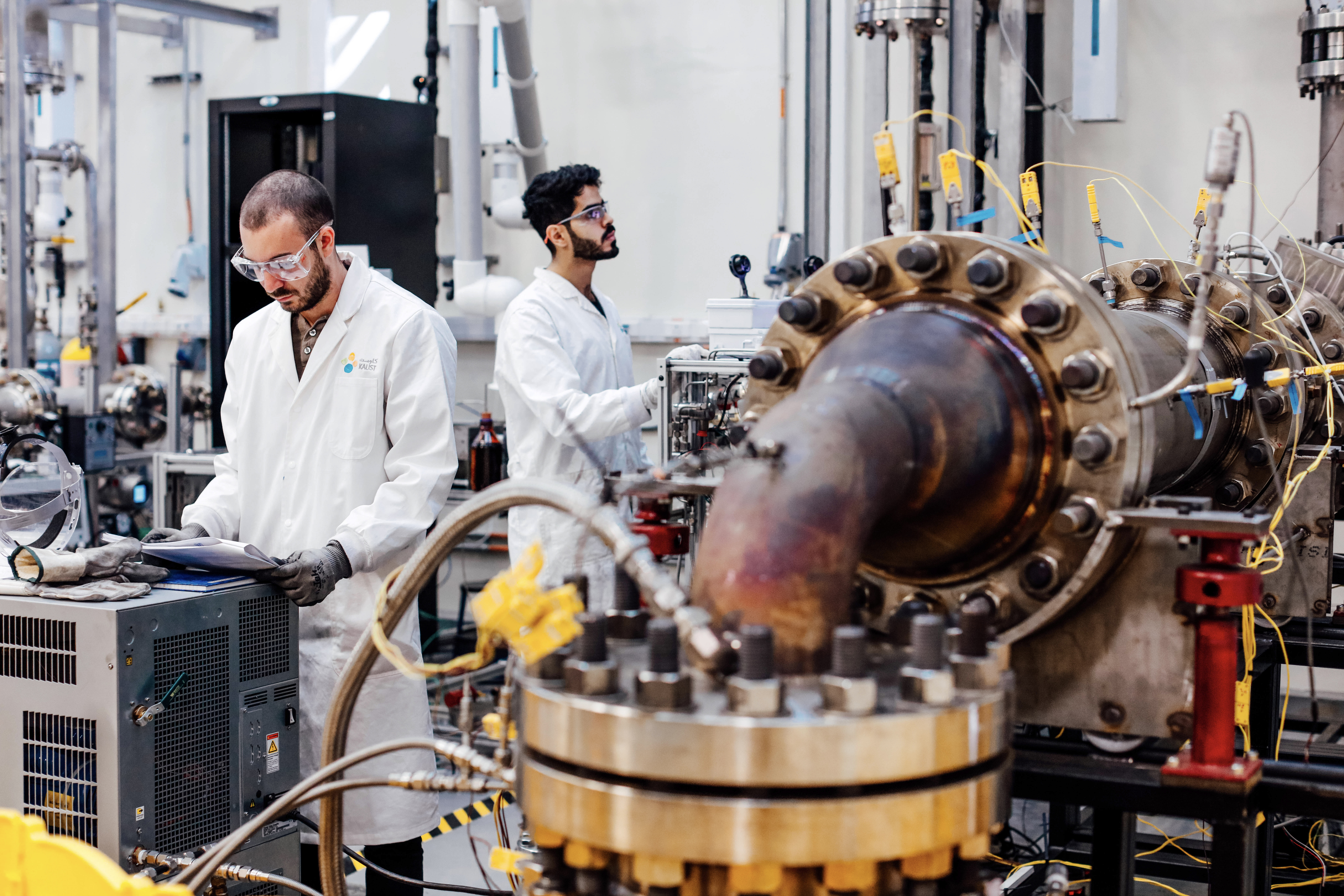
The University's Clean Combustion Research Center (CCRC) is now a leading global hub for combustion research. Photo by Anastasia Khrenova.
-By Sonia Turosienski, KAUST News
Just four years after its official inauguration, the KAUST Clean Combustion Research Center (CCRC) has established itself as a leading global hub for combustion research. In a rapidly changing economic and energy landscape, the CCRC has settled into a unique role—the development of expertise on how fuels and combustion can be more efficient, clean and economical.
Due to the high-pressure and high-temperature environments required, experimental combustion research is an expensive and physically difficult endeavor. As a result of these barriers to entry and an increased global focus on renewable energy, many centers and research groups around the world have focused less on experimental fuels and combustion research.
Despite renewable energy technologies becoming more competitively priced and technically developed, William Roberts, director of the CCRC and KAUST professor of mechanical engineering, explained that combustion research is—contrary to what some may say—a growing field with a lot of work to be done.
"We're firmly convinced that internal combustion engines are going to be around for the next 30 to 40 years," Roberts said.
While the shift to renewables is the natural next step, there is a role for hydrocarbons to play in energy storage and for a liquid-based, clean, sustainable and efficient fuel to be developed and introduced into the existing distribution network for example.
The CCRC has led the way by building groundbreaking facilities; recruiting leading researchers and faculty; and creating strong industrial partnerships, such as the 10-year FUELCOM project with Saudi Aramco.
The extensive and highly specialized facilities at KAUST make it possible to test computations and computer simulations in the physical world. The center hosts six—and soon to be seven—laboratories, each with a specific focus area, such as laser diagnostics or plasma assisted fuel reforming. In addition to the state-of-the-art facilities, the center is also one of the biggest users of the KAUST supercomputer Shaheen.
With great resources comes great responsibility
Extensive resources have not come without additional pressure to perform and responsibility to innovate and explore. Roberts reflected, "It's gratifying to see we are meeting our potential."
In 2013, the CCRC introduced a cloud-based cyberinfrastructure, CloudFlame, for managing combustion research and enabling collaborations in order to aid data sharing and promote collaboration. The center keeps careful analogs of the simulations carried out at each scale. With nine faculty members and over 150 people, the center's research is broad and as such, collaboration across research groups is key.
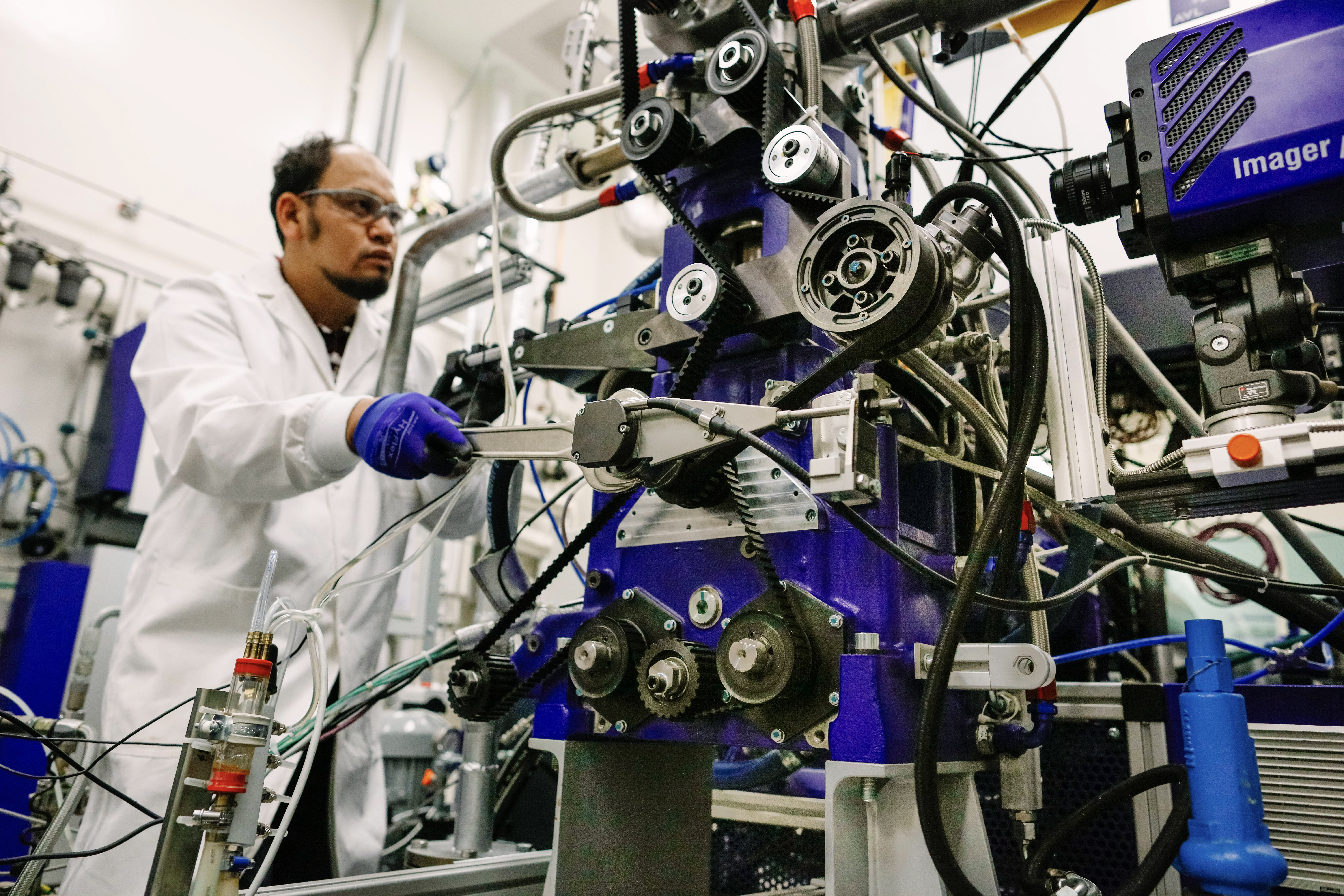
A scientist works on campus in the University's Clean Combustion Research Center (CCRC). Photo by Anastasia Khrenova.
"KAUST has a reputation now as being one of the world leading combustion research facilities. There are lots of places that have been around for 100 years. KAUST has been around for a lot less than that, but it's built itself up to be one of the world leaders in a short amount of time. At the Combustion Institute, we're happy to support the CCRC and to come and visit in order to see how you did it," Driscoll said.
Pushing the limits brings back the fundamentals
In response to the growing action to mitigate climate change and reduce the Kingdom's reliance on fossil fuels, combustion research is moving into uncharted territory—extreme conditions.
The theme of this year's annual conference, Combustion in Extreme Conditions, reflected the interest and need for developing knowledge in this area. Creating cleaner, more efficient fuels means increasing thermodynamic efficiency, which leads to high pressures, high temperatures, difficult fuels and plasma interactions.
"Gas turbines work at about 30 bar pressure and extreme conditions are moving into the 300 bar territory, which is an order of magnitude in terms of pressure difference. At this scale, the computations are more difficult and the chemistry is different. It's a comprehensive experimental and computational discovery," said Roberts. This has led combustion researchers to revisit the fundamentals.
Storing energy for tomorrow
With solar panels and other renewable energy sources coming down in price and ramping up efficiency, the next question is—how can this energy be stored?
The Kingdom's Vision 2030 agenda has presented the field of combustion with the opportunity to solve the problem of energy storage. Roberts explained that the solution will probably not be batteries, flywheels or compressed gas. One possibility is to convert photons to electrons and electrons to fuels.
"The hydrocarbon molecule is a wonderful energy storage molecule. It's why biological processes produce triglycerides and sugars. It's really hard to beat the energy density of a hydrocarbon, so for the commercial sector, natural gas will continue to dominate. I don't think we'll ever completely move away from hydrocarbons, but I think the source of hydrocarbons will change," he continued.
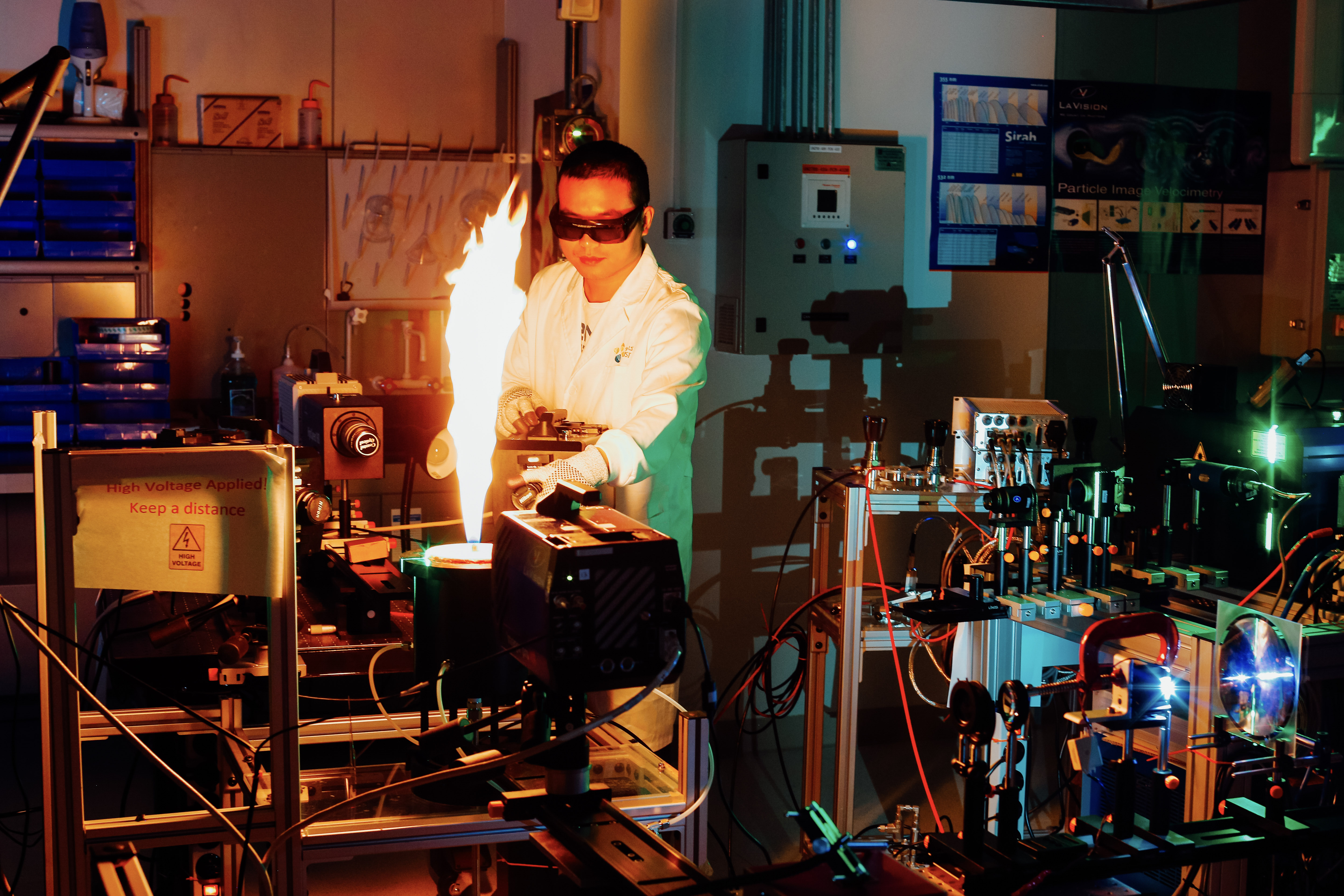
Researchers at the University's Clean Combustion Research Center (CCRC) work on how fuels and combustion can be more efficient, clean and economical. Photo by Anastasia Khrenova.
In addition to energy storage, combustion research plays a role in creating solar or e-fuels with a hydrocarbon base that can be integrated into the existing network. At CCRC, the approach has been solution agnostic. Various research groups within the center are working on sub-processes, with the aim of producing final solutions. The center's broad range of research areas and comprehensive facilities are particularly well-poised to test developing research approaches.
In terms of passenger transportation, hybridization is well on its way. According to Roberts, this shift makes sense in terms of energy efficiency and energy needs.
"Over the next 25 years, 75 percent of cars will be partly electrified and 90 percent will have an internal combustion engine, so they will continue to be relevant even as we electrify," he said.
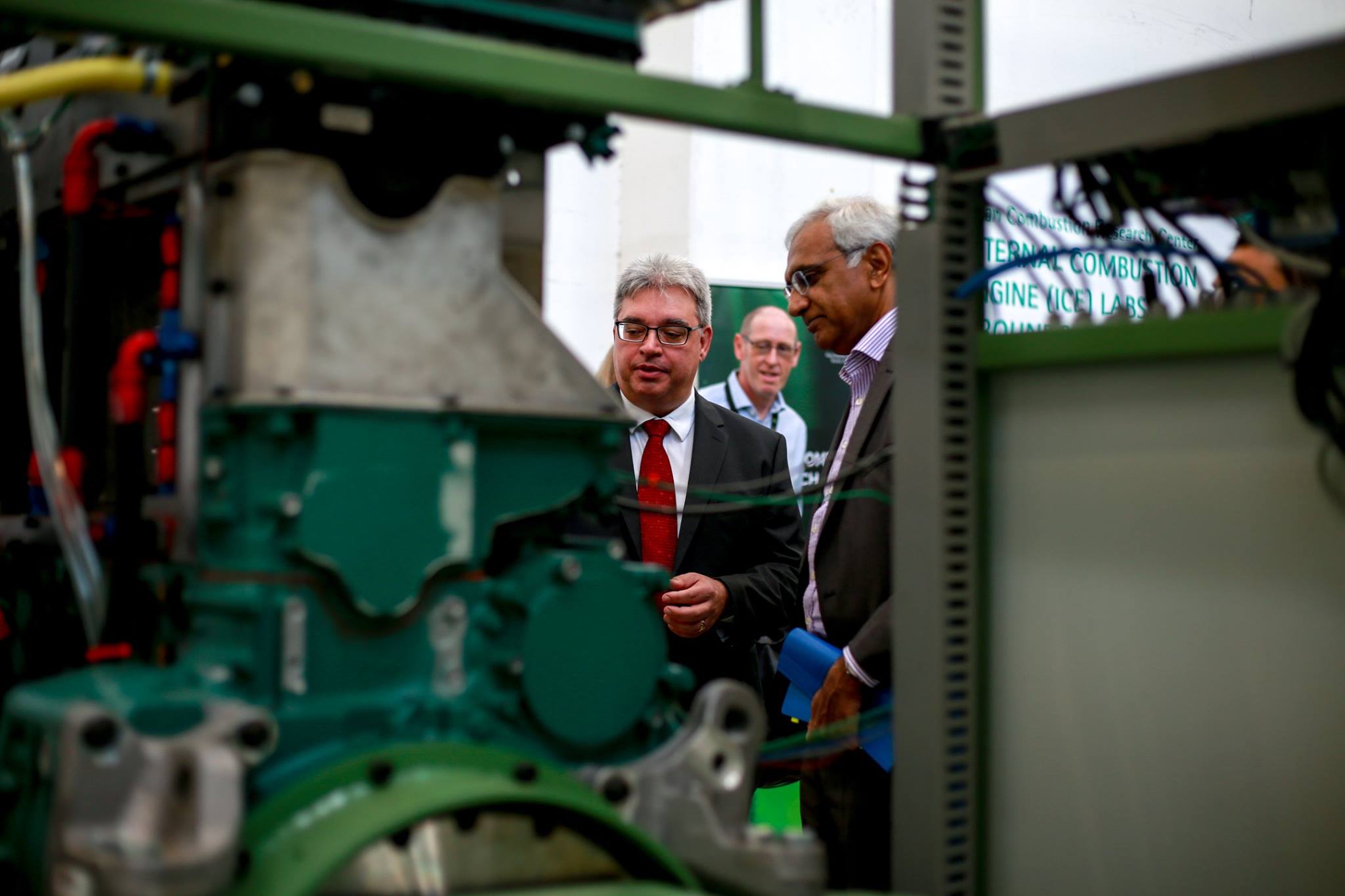
The University's Clean Combustion Research Center (CCRC) has established itself as a leading global hub for combustion research and develops how fuels and combustion can be more efficient, clean and economical. File photo.
While engines and fuels will continue to provide power, the engines and fuels themselves will not look the same. In order to meet these new demands, the CCRC broke ground in November 2017 on a new Internal Combustion Engine Test Facility, which will house 11 new test cells containing a variety of engines, including large single cylinder, optical, heavy and light duty.
The new facility is due for completion in December 2018 and is being built by the Jones Engineering Group. It will give researchers the opportunity to test out-of-the-box ideas, transforming the engines and fuels we know today. For example, researchers will be able to test under extreme conditions, experiment with combination engines, 8-stroke engines, change the working fluid and explore the possibility of on-demand octane adjustment. They aspire to reach the goal of reaching 60 percent thermodynamic efficiency, which is, according to Roberts, a very lofty goal.
Making the most of what the Kingdom has to offer
In addition to exploring ways to limit carbon emissions, Roberts explained that the center is also working on how the carbon dioxide that is emitted can go from a waste product to something of value. Augmenting carbon dioxide to create something of value has led combustion researchers back to the fundamentals, yet again. Researchers are exploring new heat cycles and revisiting combustion kinetics in order to determine what happens at a fundamental level.
This work, in turn, has led to avenues for collaboration within KAUST. The Advanced Membranes and Porous Materials Center (AMPM) is working on separating oxygen and nitrogen before the combustion process. Once combustion occurs, the carbon dioxide is emitted at high pressures, which the KAUST Catalysis Center is interested in making use of. An additional use of this high-pressure carbon dioxide may be applicable to research in the Ali I. Al-Naimi Petroleum Engineering Research Center for enhanced oil recovery.
Whether it's turning waste products into energy sources or creating materials, the CCRC team and collaborating centers on campus are leaving no stone unturned when it comes to increasing efficiency and making the most of fossil fuel processing and the combustion process.
A bright future for all seasons
The center is also keenly focused on spreading knowledge and developing tomorrow's combustion researchers to take over the mantle. The center enjoyed two firsts this year: the first CCRC Winter School and the first Combustion Institute Summer School (CI-SS) at KAUST.
In January, the center opened its doors to 15 of the brightest and most promising engineering and chemistry students. The three-week school focused on a new topic each week—engines, fuels and flames—with students giving weekly presentations to cement their theoretical learning in the classroom and practical experience in the labs.
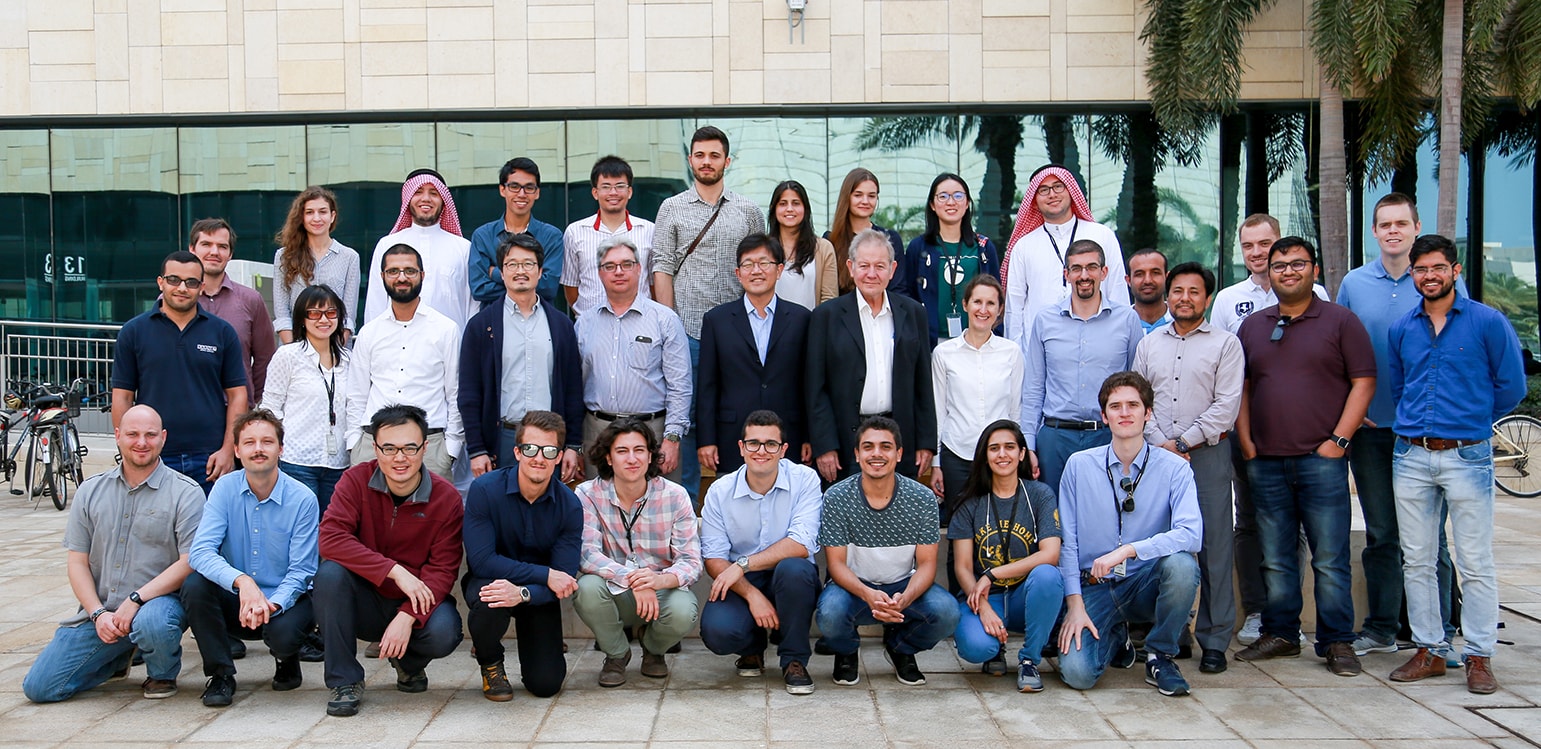
The 2018 CCRC Winter School students engage with their faculty and advisors on campus. Photo by Raheena Abdurehim.
True to its mission of innovation, the summer school was the first of its kind in the Middle East and open to global participants through a live high-quality video stream. Summer school attendees were treated to lectures by CCRC professors and instructors from abroad as well as practical sessions in the center's six labs.
The Combustion Institute's selection of the CCRC as the next location for the CI-SS—the first in the Middle East—is an indication of the center's strong academic stature and respected global reputation. The aim of the school is to encourage students to broaden their views.
"We've had good impact in our research activities and felt it was the right time for the center to create a new summer school in the region and spread knowledge," said Mani Sarathy, KAUST associate professor of chemical and biological engineering and associate director of the CCRC.
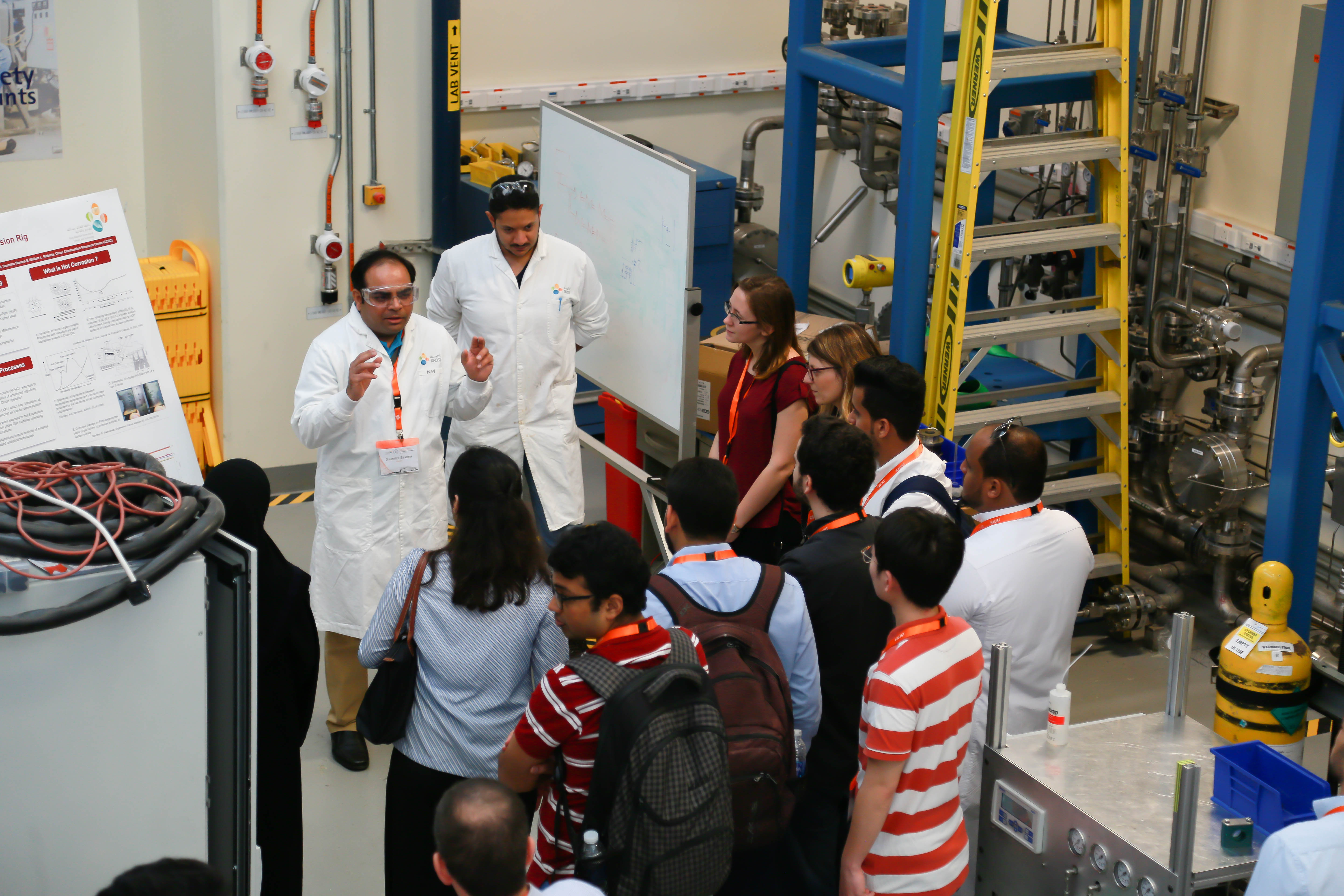
The University's Clean Combustion Research Center (CCRC) often hosts guest students, professors and industry leaders on campus for a variety of international conferences and other events. File photo.
The field of combustion has a bright future ahead. Angela Violi, professor of mechanical engineering and chemical engineering at the University of Michigan, who gave a lecture and workshop on fuel fundamentals at the school, noted the diversity of the audience and the interest she received from female students.
On the last day of the school, Deanna Lacoste, KAUST assistant professor of mechanical engineering, moderated the Women in Combustion panel discussion, which included professors, master's degree and Ph.D. students and lab scientists working in combustion. The goal of the panel was to understand the motivations and challenges women face.
Sarathy concluded, during a post-event Facebook Live interview, "The CI-SS wants to break down barriers. We need new ideas from men and women from all backgrounds to push combustion in new directions."
With the pressing demands of climate change and developing energy policy in the Kingdom, the scientific and technical challenges the center is facing have never been more pressing. Having built a global reputation in a short space of time, the CCRC is up to the task.
Related Stories:
-
KAUST student awarded grant from KACST
- A 'silver bullet' awakening
- CCRC team wins first place honors in Bahrain
-
KAUST inaugurates Clean Combustion Research Center

